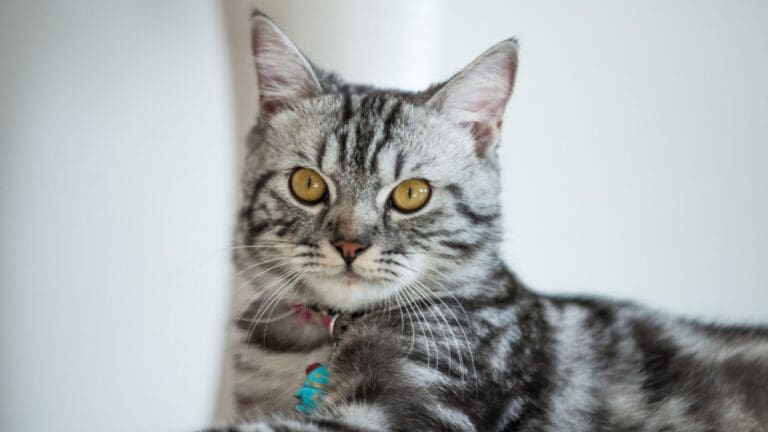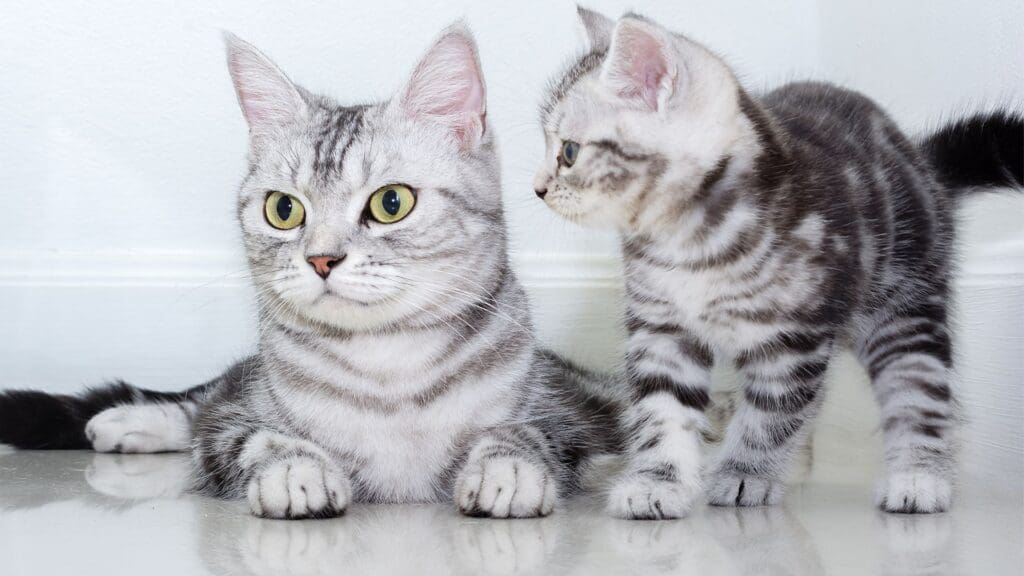American Shorthair

When it comes to feline companions, the American Shorthair cat is an exceptional breed that captures the hearts of many. With its distinctive features and charming personality, this breed has gained popularity worldwide. This article will explore American Shorthairs, their history, physical characteristics, temperament, health, care, training, and much more.
Lifespan
15 – 20 Years
Temperament
These cats are known for their gentle and easygoing nature, making them delightful companions for individuals and families alike. They have a calm and even-tempered nature, which makes them well-suited for various living situations.
Weight
Male up to 15 Lbs
Female up to 12 Lbs
Coat
As their name suggests, American Shorthairs have a short and dense coat. This coat type provides them with protection and insulation without excessive length or bulk. The short length of their fur makes grooming relatively easy compared to long-haired breeds.
Color
Solid colors ranging from black, white, blue, cream, and various shades in between. Classic Tabby, Mackerel Tabby, Ticked Tabby, Tortoiseshell, Calico, Silver, Smoke
Grooming
The American Shorthair’s coat is relatively easy to maintain. Its short, dense fur requires minimal grooming compared to long-haired breeds. However, regular grooming sessions are still beneficial in keeping their coat healthy and minimizing shedding.
Brushing your American Shorthair once or twice a week helps remove loose hair and prevents matting. This not only keeps their coat looking sleek but also reduces the amount of hair they may ingest during self-grooming, potentially preventing hairballs.
Shedding
American Shorthairs are considered moderate shedders. While they do shed, their short fur tends to stay contained and is less likely to become easily tangled or matted. Regular brushing can help minimize shedding by removing loose hair and preventing it from accumulating on furniture or clothing. Brushing also promotes a healthy coat by distributing natural oils and stimulating blood circulation.
Common Health Problems
- Hypertrophic Cardiomyopathy (HCM)
- Polycystic Kidney Disease (PKD)
- Obesity
- Dental Issues
- Urinary Tract Issues
It is worth noting that some American Shorthairs may not experience these health issues, and with proper care, regular veterinary check-ups, and a nurturing environment, they can live a long and healthy life. Responsible breeding practices, including health screenings of parent cats, can also help reduce the incidence of certain genetic conditions. Responsible breeding practices, including health screenings of parent cats, can also help reduce the incidence of certain genetic conditions.
History
The ancestors of American Shorthairs can be traced back to Europe, particularly England. During the colonization of the Americas, European settlers brought cats aboard their ships to control rodents that posed a threat to their food supplies.
Upon arrival in the New World, these cats served as efficient rodent hunters in various settings, including farms, barns, and ships. They played a vital role in keeping vermin populations under control, protecting valuable crops and supplies.
Over time, these working cats interbred with domestic and feral cats already present in America, resulting in a diverse population of sturdy and adaptable cats. Their natural selection and breeding eventually led to the development of the American Shorthair breed as we know it today.
Affection | 5/5 |
Friendliness | 5/5 |
Shedding | 3/5 |
Grooming | 4/5 |
Dog Friendly | 5/5 |
Kid Friendly | 5/5 |
Intellignece | 3.5/5 |
Health | 1.5/5 |
Vocalization | 2/5 |

